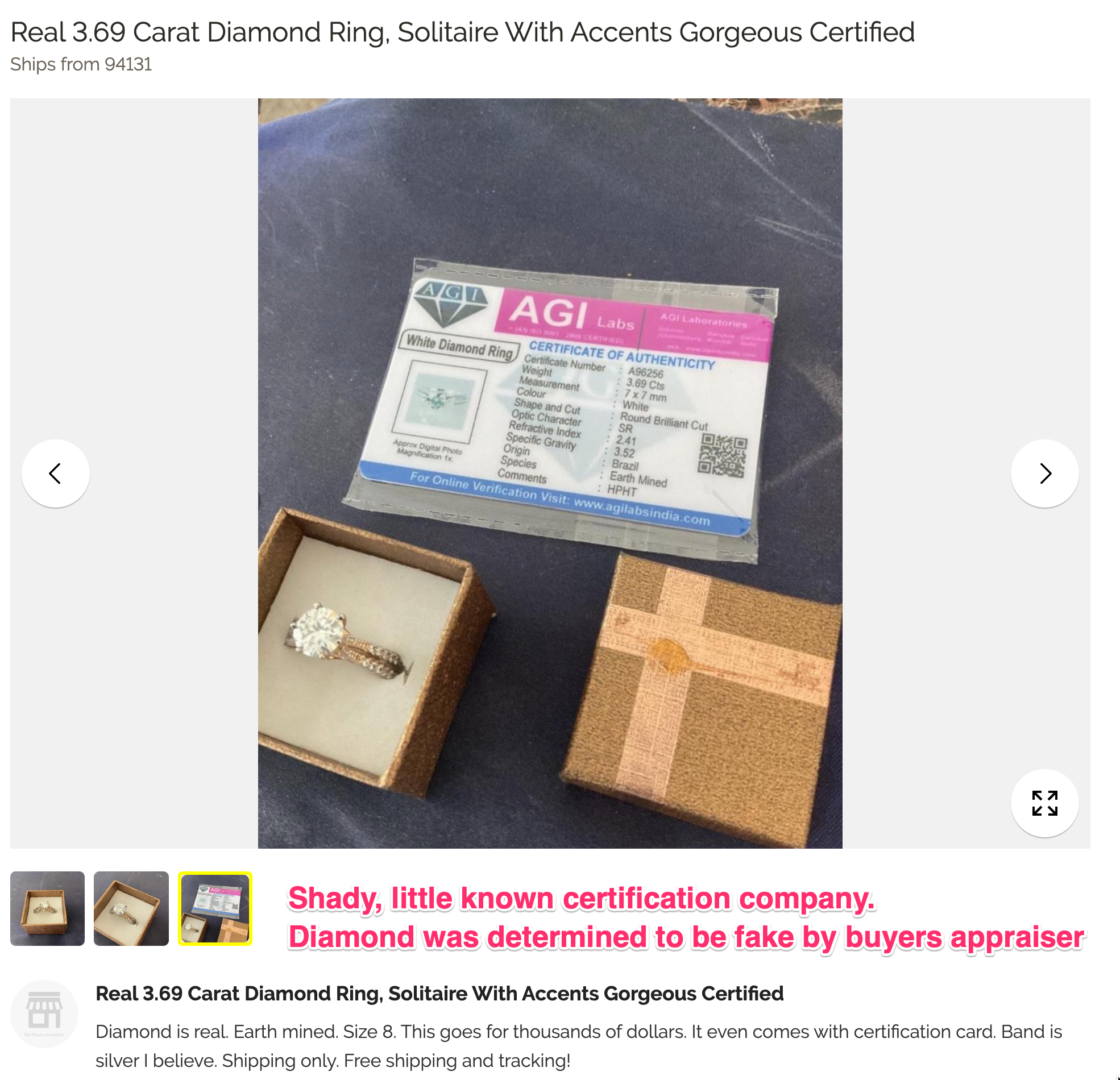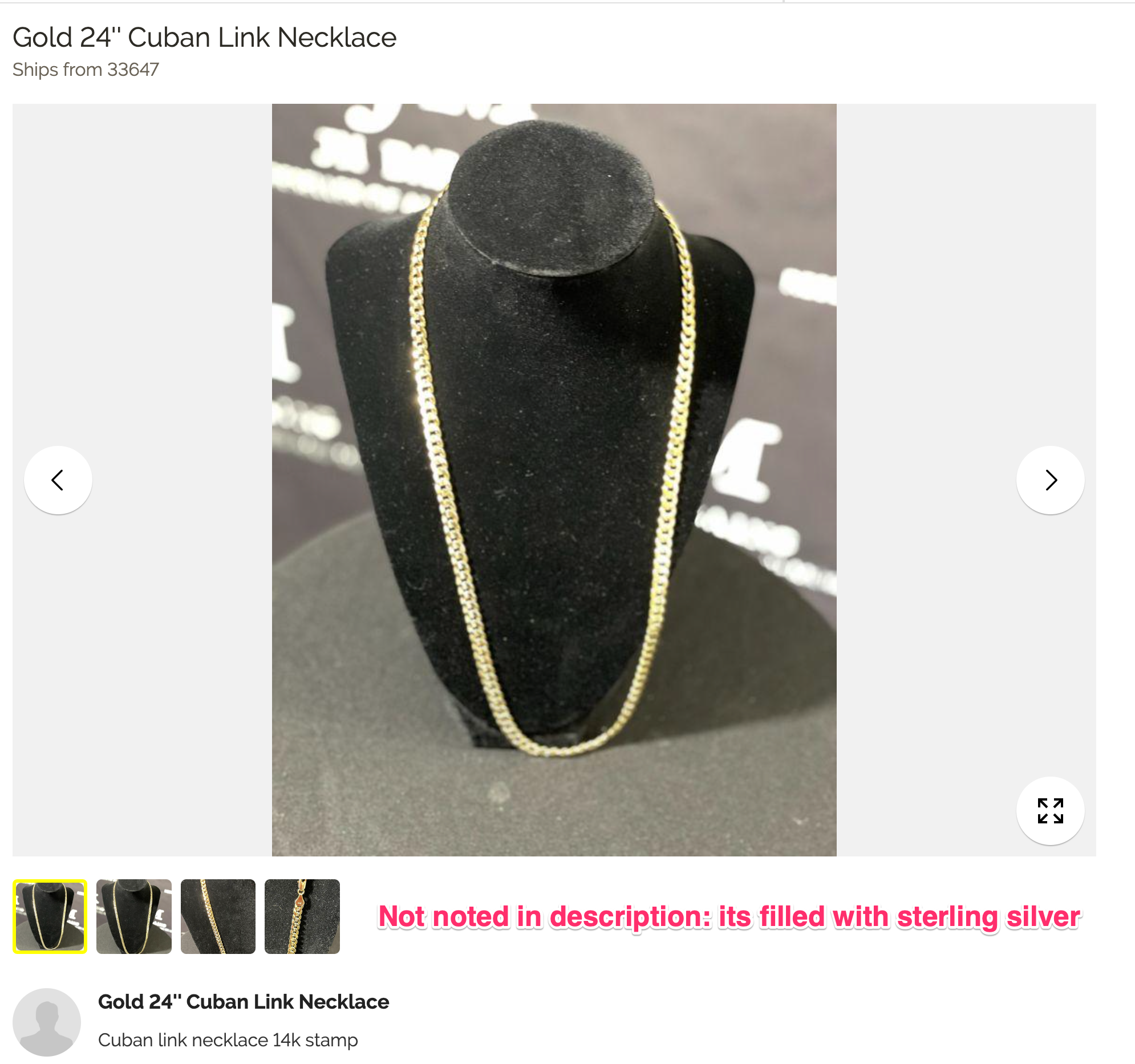Avoiding Scams
Avoiding Fraud, Counterfeit Items & Other Scams
While our rules for sellers state that counterfeit items are not allowed, EstateSales.org does not and cannot verify the authenticity of each and every item sold on its platform.
Items such as jewelry, coins, art, and other valuables and collectibles are listed by individual sellers without any guarantee of authenticity, accuracy, or value by EstateSales.org. All risk is assumed by the buyer in any transaction and EstateSales.org is not a party to any sale. If an item you buy turns out to be counterfeit or not as described, report the seller so that we can quickly suspend their account.
In general, gold, diamond, or other precious metals, gemstones and jewelry present a higher risk for being counterfeit.
Tips on avoiding scams and counterfeit items
Look for the "Verified Seller" badge on the sellers sale page or company profile page. Having this status is not a guarantee that the items they sell are all authentic, but it does mean that we have verified their identity to the best of our ability using photos of their government issued id and other data. Sellers who are verified are overall less risk of doing business with.
Always pay by credit card as all major card companies have a dispute process which gives you some protection as a buyer should the items not be sent or end up being counterfeit. Do not pay by cash, wire transfer, Venmo, Zelle, Venmo, Cash App, or other peer-to-peer ACH based payment apps unless you know and trust the seller extremely well. These payment methods almost always leave the buyer no recourse should an item not be shipped or turn out to be counterfeit. If a seller that you aren't familiar with contacts you requesting such payment on any sort of item that is of high value, please notify us.
Beware of fake certifications. Sellers of counterfeit items are going to new lengths to trick people into believing that their items are real. Some scams have involved certifications from fake or shady grading companies such as "AGI Labs India", which even has an entire website that appears legitimate, but has in fact been long suspected of issuing fake or misleading certifications. In general, only trust a certification if it comes from a top tier company that does lab testing such as AGS or IGI, or GCAL (for diamonds and precious metals). For collectibles such as sports cards comic books, and coins, the top grading companies are CGC (Comic Books) , PSA and SGC (Sports Cards), and PCGS (Coins).
If the deal seems "too good to be true", you can bet it is almost always a scam or counterfeit item. For example, a 4 carat diamond ring is worth at minimum $10,000 up to $100,000. If you see a ring of this carat size being sold for $1,000, its a good sign that this is a counterfeit item or is not described fully and truthfully. It pays to do your research when it comes to value so that you can be well educated before you commit to any transaction.
Examples of Real Scams
Item was not genuine. Fake certification. The following item was listed as "Real 3.69 Carat Diamond Ring, Solitaire With Accents Gorgeous Certified". A photo of the ring as well as certification from a little known company is attached. Item is priced or sold for a fraction of what a real diamond ring of this size would be worth. Ring is received and diamond is determined to be fake. Seller then claims that it is a "heat treated" diamond that passed their diamond tester. Many buyers (as well as some sellers) will not be aware that some diamond simulants can pass a diamond tester. For example, moissanite, a man made gem, may pass as a diamond on a standard tester pen.

Item indicates a greater degree of fineness than the actual fineness. The following item was listed as "Gold 24'' Cuban Link Necklace"and described as "Cuban link necklace 14k stamp". Item is purchased assuming that it is solid gold. Buyer receives item and determines the item to be gold plated and filled with sterling silver. item is worht only a fraction of what was paid, plus the item is illegal.

